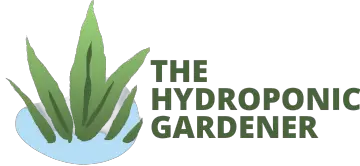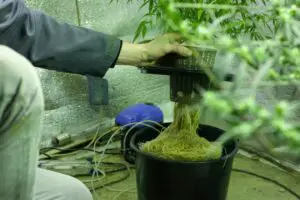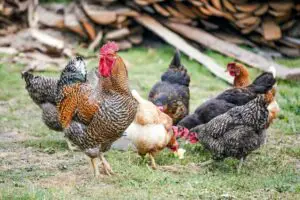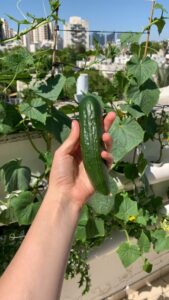Hydroponics has emerged as an innovative solution in a world grappling with water scarcity and the need for sustainable agricultural practices. Traditional farming methods often require copious amounts of water, leaving a significant ecological footprint. However, hydroponic systems offer a promising alternative, enabling growers to cultivate plants with significantly less water consumption.
This soil-less cultivation technique involves growing plants in a nutrient-rich water solution, providing them with the necessary elements for growth. Eliminating soil use allows hydroponics to optimize water usage, thereby conserving this precious resource. But just how water-efficient are hydroponic systems? Here’s a look at the intricacies of hydroponics and explores the potential for water savings in these systems.

Water Usage In The Different Types of Hydroponic Systems
Water usage in different types of hydroponic systems can vary based on their design and irrigation methods. Here’s an overview of water usage in some common types of hydroponic systems:
Deep Water Culture (DWC)
In Deep Water Culture systems, plant roots are submerged in a nutrient solution. The water level is typically maintained just below the bottom of the plant net pots, allowing the roots to access oxygen. DWC systems are relatively water-efficient since water is recirculated and reused. However, some water loss may occur due to evaporation from the exposed water surface.
Nutrient Film Technique (NFT)
Nutrient Film Technique systems use a thin film of nutrient solution that flows over the plant roots in a shallow, sloping channel. The nutrient solution is continuously pumped from a reservoir, and the excess solution returns to the reservoir for reuse. NFT systems are water-efficient as they require only a thin film of water to maintain nutrient delivery.
Ebb and Flow (Flood and Drain)
Ebb and Flow systems intermittently flood the growing tray with a nutrient solution and then drain it back into a reservoir. A timer or automated system controls the frequency of flooding and draining of the garden. While Ebb and Flow systems can be efficient in nutrient delivery, they may use slightly more water than NFT or DWC systems due to the occasional flooding.
Aeroponics
Aeroponic systems mist the plant roots with a nutrient solution, suspending them in the air. These systems are among the most water-efficient hydroponic methods. They use a minimal amount of water as a fine mist, which is recirculated and reused.
Wick System
Wick systems are simple and passive hydroponic setups that use a wick to draw nutrient solution from a reservoir into the growing medium. Water usage in wick systems is relatively low, but the rate of nutrient delivery can be slower compared to other hydroponic methods.
Drip Irrigation
Drip irrigation systems deliver nutrient solutions directly to the plant roots through a network of tubes and emitters. The rate of water usage in drip systems can be adjusted based on the plant’s needs. Drip irrigation is generally efficient as it provides targeted water delivery.
Continuous Flow System
Continuous flow systems operate by continuously delivering a nutrient solution to the plant roots, with the excess solution draining back into the reservoir for recirculation. These systems can be water-efficient, particularly when carefully managed to avoid overwatering.
The Kratky Method
In the Kratky Method, water usage is minimal and efficiently managed due to its passive design. This technique utilizes a non-circulating hydroponic system, and water is not continuously pumped or recirculated. The initial nutrient solution is provided at the start, and the plants draw up the water they need through capillary action as they grow. There is no water replenishment during the plant’s growth cycle, leading to efficient water usage and conservation.
What Is More Efficient: Traditional Farming Or Hydroponic Farming?
Before we can answer whether hydroponic systems use less water, we have to take a look at both types of farming.

Traditional Farming and its Water Usage
Traditional agriculture has been the backbone of human civilization for millennia, providing sustenance and nourishment for communities across the globe. However, this time-tested practice is not without its challenges, particularly regarding water usage. In traditional farming methods, water is crucial in nurturing crops and ensuring their growth and productivity.
One of the primary ways traditional agriculture uses water is through irrigation. Farmers rely on natural sources like rivers, streams, and groundwater or construct elaborate irrigation systems to supply water to their fields. This manual watering process can be labor- and resource-intensive, as it involves diverting and distributing water across vast agricultural lands.
Statistics on water usage in traditional farming reveal the scale of its impact on global water resources. According to a report by the United Nations’ Food and Agriculture Organization (FAO), agriculture accounts for approximately 70% of the world’s freshwater withdrawals. This significant percentage showcases the heavy reliance of traditional agricultural practices on water to support its practices.
Moreover, in many regions, the competition for water resources between agricultural needs and other sectors like industry and domestic use has become increasingly fierce. This has led to water scarcity in certain areas, straining farmers and affecting food production. In regions facing water scarcity, farmers may have to resort to water rationing or reduce the number of crops they grow, leading to economic and food security challenges.
Furthermore, traditional agriculture is also associated with water wastage due to inefficient irrigation methods. Flood irrigation, for example, can result in significant water losses through evaporation and runoff, diminishing the overall water use efficiency.

Water Usage in a Hydroponic System
Hydroponics systems utilize water in a highly efficient and targeted manner, making them a sustainable and water-saving alternative to traditional soil-based farming. So yes, these systems use less water than conventional farming methods.
In hydroponic farming, water is delivered directly to the plant roots. The absence of soil eliminates the need for excess water to reach the roots, as is the case in traditional agriculture. This precise water delivery ensures that plants receive the exact amount of water they need, minimizing wastage and optimizing water usage.
Many hydroponic setups are designed with recirculating systems, where water is continuously cycled and reused. After providing nutrients to the plants, the excess nutrient solution is collected, filtered, and returned to the reservoir for reuse. This closed-loop approach significantly reduces water consumption, as water losses due to evaporation and runoff are minimal.
Controlled systems
Hydroponic systems are set up in controlled environments, such as greenhouses or indoor spaces. These controlled conditions allow for precise temperature, humidity, and irrigation schedule management. Water is supplied based on the plant’s growth stage and environmental factors, further reducing water waste.
These systems minimize water loss due to evaporation, a common issue in traditional farming, where large exposed soil surfaces can lead to significant water evaporation. Hydroponics mitigates this loss and optimizes water usage by keeping water within a closed system and delivering it directly to the roots.
Some hydroponic systems use drip irrigation or other precise watering methods to deliver water directly to the root zone. This controlled irrigation reduces water wastage and ensures that plants receive water only when needed.
Overall, hydroponic systems exemplify efficient water use through their targeted water delivery, recycling practices, and controlled environments. By minimizing water wastage and optimizing nutrient delivery, hydroponics presents a sustainable and water-saving solution for agricultural production, particularly in regions facing water scarcity and environmental challenges. The efficiency of hydroponics in water usage positions it as a promising approach to address food security concerns while preserving valuable water resources for future generations.

Benefits of Lower Water Usage in Hydroponic Systems
Lower water usage in hydroponics brings about a range of significant benefits, contributing to sustainable agriculture and addressing water scarcity challenges. Here are some of the key advantages:
Water conservation
Hydroponics systems are renowned for their efficient use of water. Compared to traditional agriculture, water loss in a hydroponic system drastically decreases to only about 1.5%. This efficiency stems from the fact that water in hydroponic systems is recirculated and reused.
The water savings can be significant in large-scale hydroponic operations, with some farmers estimating that they use up to 70-90% less water than traditional methods. This is because only the amount of water the plants need is used, and no runoff or evaporation occurs as it does with traditional farming.
Hydroponic systems allow for precise control over water delivery, ensuring plants receive the right amount of water at the right time. This targeted approach optimizes plant growth while avoiding overwatering, which can be a common issue in conventional agriculture. As a result, hydroponics helps maintain water balance in the growing environment.
The amount of water needed in hydroponics also varies based on the size of the plants being grown. For instance, small-sized plants typically need about a half gallon of water, medium-sized plants require between 1 – 1.5 gallons of water, and large plants need approximately 2.5 gallons.
When comparing water consumption per crop in soil and hydroponics, the numbers are quite revealing. Vegetables grown outdoors may take about 60 L of water to produce a single kilogram of product. However, this amount falls to just 15 L for hydroponic greenhouse production.
This reduced water usage alleviates pressure on freshwater resources by conserving water, especially in regions facing water scarcity and drought conditions.
Less of an environmental impact
Hydroponics offers several environmental benefits compared to traditional farming practices, mainly due to its efficient water usage and closed-loop nutrient management. In traditional agriculture, excess irrigation water and rainwater can wash away fertilizers, pesticides, and other chemicals from fields, leading to water runoff.
This runoff carries pollutants into nearby water bodies, causing water pollution. In hydroponics, water usage is controlled and minimized, significantly reducing the potential for water runoff and the associated pollution.
In conventional farming, excess fertilizers applied to the soil can leach into groundwater or surface water, leading to nutrient pollution in water bodies. This phenomenon is known as nutrient leaching. In hydroponics, nutrients are delivered directly to the plant roots, and the closed-loop recirculating systems prevent nutrient wastage and leaching, thus minimizing the risk of nutrient pollution.

Supports sustainable farming
As a sustainable agricultural practice, hydroponics helps ensure the long-term viability of farming. Hydroponics supports efficient resource management and reduces the strain on natural water sources by relying on closed-loop recirculation systems and targeted water delivery.
Water is the basic ‘carrier’ in hydroponics, dissolving and transporting essential nutrients to plants. The water and nutrients combine to create a nutrient solution tailored to the plant’s needs. This targeted approach ensures that plants receive the right balance of nutrients, preventing over-fertilization and nutrient leaching, which could lead to water pollution in traditional farming.
Hydroponics can lower greenhouse gas emissions associated with conventional farming practices by optimizing resource usage and reducing transportation requirements for irrigation water and fertilizers.
Reducing water and land usage can help conserve natural habitats and biodiversity. Preserving biodiversity is vital for maintaining ecosystem balance and ensuring the survival of various plant and animal species.

Increases crop yields
Despite using less water, hydroponic systems can achieve higher crop yields compared to traditional farming. This is primarily due to the precise control over water and nutrient delivery, which optimizes plant growth and reduces crop stress.
Hydroponics offers the flexibility of year-round crop production, independent of seasonal constraints. This continuous availability of fresh produce helps stabilize food supply, particularly in regions with harsh climates or limited growing seasons.
Lastly, hydroponic systems are controlled environments, making them more resilient to extreme weather events and climate change impacts. They can adapt to temperature fluctuations, droughts, and floods, ensuring more consistent crop yields and contributing to food security.

Enhances land utilization
Hydroponic systems, particularly vertical setups and urban farms enable farming in areas with limited space. By using less land, hydroponics helps preserve natural habitats, reduces deforestation, and allows for more efficient land use planning.
Additionally, unlike traditional farming practices, which lead to soil degradation due to erosion, compaction, and loss of organic matter, hydroponics eliminates the need for soil altogether, reducing the need for land altogether.
Improves water and food security
With a growing global population and increasing food and water demand, hydroponics contributes to their security by promoting sustainable agriculture practices. It ensures that agricultural activities continue without depleting or straining finite water supplies.
In regions facing water scarcity or drought conditions, hydroponics offers a viable solution for crop production. The closed-loop systems and controlled environments in hydroponics enable farming even in areas with limited water availability, reducing the dependence on traditional irrigation methods that may deplete already scarce water sources. This localized food production increases food security and reduces the need to transport food over long distances, often requiring substantial resources.
Conclusion
In traditional gardening, we are bound to the whims of Mother Nature and climate change, leaving us struggling to conserve the water we have. However, hydroponics presents a water-saving oasis amid such challenges. By eschewing soil and embracing advanced water management techniques, hydroponic systems have proven to be remarkably efficient in their water usage.





